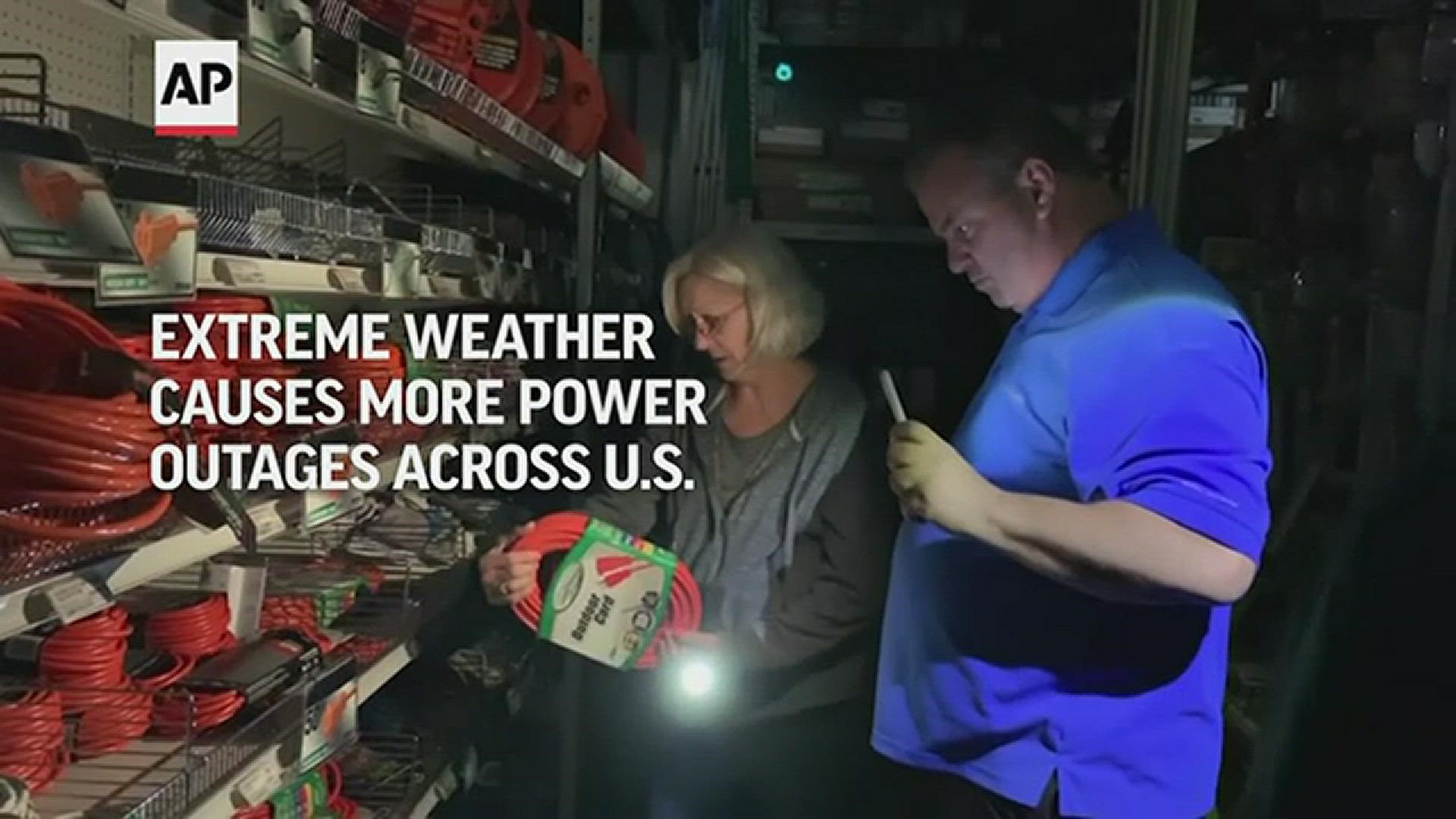Power outages from severe weather have doubled over the past two decades across the U.S., as a warming climate stirs more destructive storms that cripple broad segments of the nation’s aging electrical grid, according to an Associated Press analysis of government data.
Forty states are experiencing longer outages — and the problem is most acute in regions seeing more extreme weather, U.S. Department of Energy data shows. The blackouts can be harmful and even deadly for the elderly, disabled and other vulnerable communities.
Power grid maintenance expenses are skyrocketing as utilities upgrade decades-old transmission lines and equipment. And that means customers who are hit with more frequent and longer weather outages also are paying more for electricity.
“The electric grid is our early warning,” said University of California, Berkeley grid expert Alexandra von Meier. “Climate change is here and we’re feeling real effects.”
The AP analysis found:
—The number of outages tied to severe weather rose from about 50 annually nationwide in the early 2000s to more than 100 annually on average over the past five years.
—The frequency and length of power failures are at their highest levels since reliability tracking began in 2013 — with U.S. customers on average experiencing more than eight hours of outages in 2020.
—Maine, Louisiana and California each experienced at least a 50% increase in outage duration even as residents endured mounting interruption costs over the past several years.
—In California alone, power losses have affected tens of thousands of people who rely on electricity for medical needs.

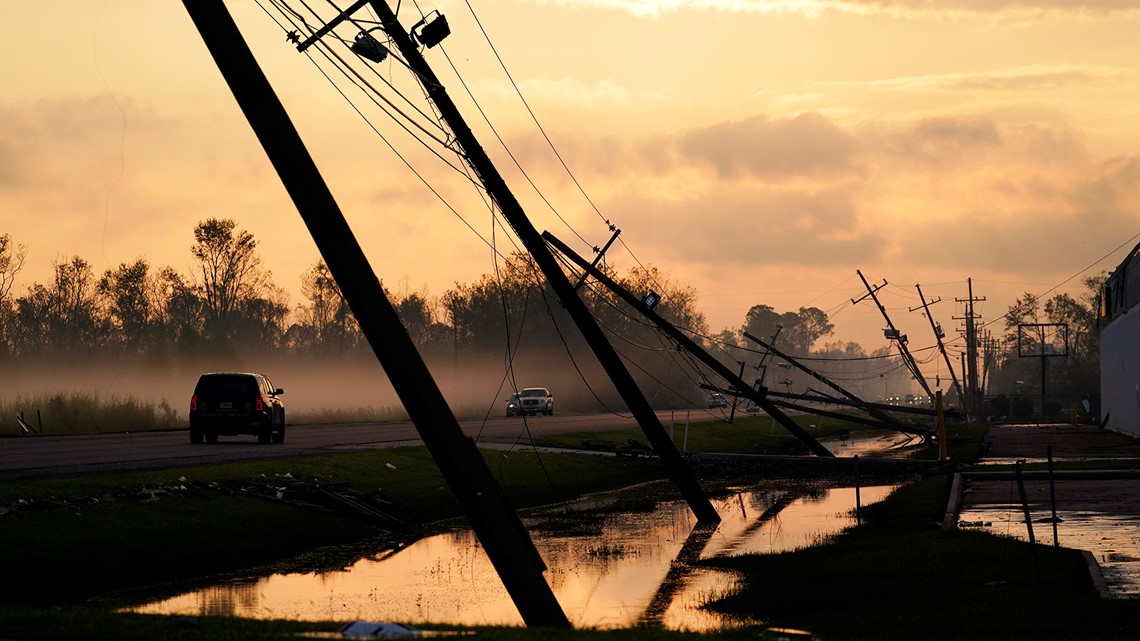
The AP analyzed electricity disturbance data submitted by utilities to the U.S. Department of Energy to identify weather-related outages. The analysis also examined utility-level data covering outages of more than five minutes, including how long they lasted and how often they occurred. Department officials declined comment.
Driving the increasingly commonplace blackouts are weather disasters now rolling across the country with seasonal consistency.
Winter storms called nor'easters barrel into New England and shred decrepit electrical networks. Hot summers spawn hurricanes that pound the Gulf Coast and Eastern Seaboard, plunging communities into the dark, sometimes for months. And in fall, West Coast windstorms trigger forced power shutoffs across huge areas to protect against deadly wildfires from downed equipment.
Maine
The power grid's fragility hit home for Lynn Mason Courtney, 78, a blind cancer survivor living in a retirement community in Bethel, Maine, a rural town of 2,500 along the Androscoggin River.
When Courtney's building lost power and heat for three days following a 2020 winter storm, the temperature inside fell to 42 degrees (6 degrees Celsius). Extended loss of heat isn’t something most people are prepared for in a cold state such as Maine, she said, and one resident relied on old camping gear to try to keep warm.
"I developed hypothermia. I was dehydrated,” Courtney said. “Two people on oxygen had nowhere to go. They just stayed in the apartment and hoped like hell that the power would come back on.”

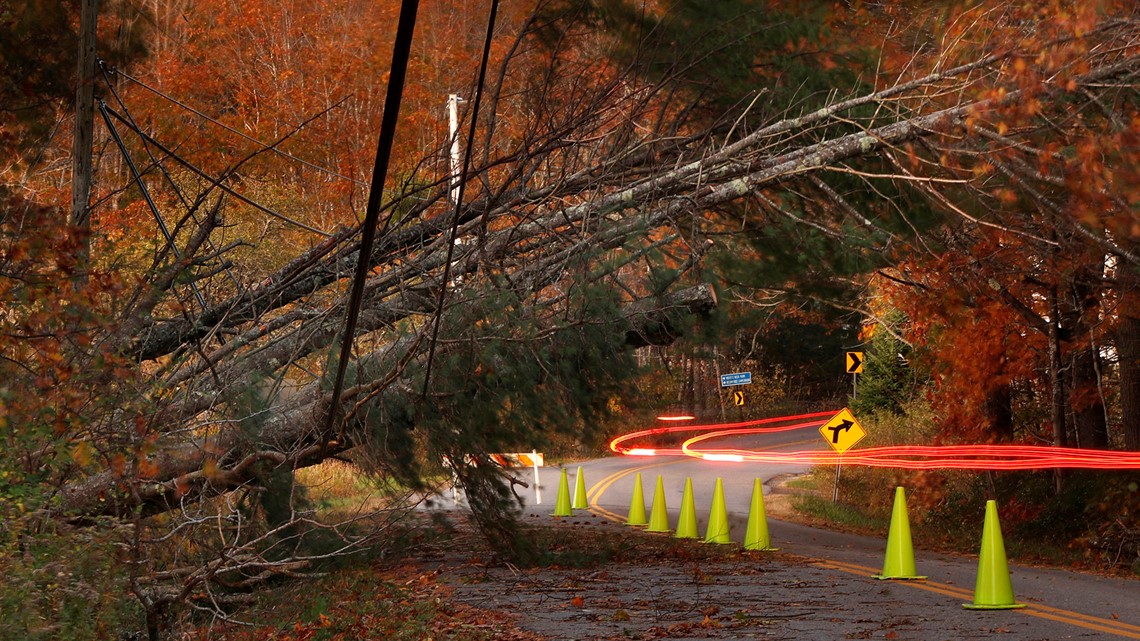
Winter storms left more than 500,000 without power in Maine in 2017 — more than a third of the state’s population. And in recent years, the state has seen record numbers of weather-related interruptions. The state never recorded more than five per year until 2018, but in 2020 it had 12, AP's analysis found.
As with much of the nation, Maine’s electrical infrastructure was built decades ago and parts are more than 50 years old, according to the American Society of Civil Engineers.
The brittle condition of the state's power grid and repeated disruptions worsened by climate change worry Courtney.
“When the power goes out, it’s extraordinarily difficult and dangerous,” she said. "If you’re disabled, it’s scary. You’re not safe.”
As the planet warms, storms that threaten power reliability are likely to hit some areas harder, said Penn State University meteorology professor Colin Zarzycki.
A warmer atmosphere holds more moisture, increasing energy packed by storms no matter the season. The phenomenon produces, for example, increasingly destructive tropical hurricanes that strike the Southeast and Pacific storms that cause flooding on the West Coast.
On the East Coast, some nor'easters will convert to rainstorms as freezing weather shifts north. But those that fall as snow could be bigger than ever, Zarzycki said.
And some areas will get less snow but more sleet and freezing rain that can wreak greater damage on electrical systems, because ice-laden equipment is easier for winds to topple.
“Those really high-end nor’easters, the ones that take over CNN for days, those are going to occur with the same or increased frequency,” Zarzycki said. “Where these events occur could lead to increased vulnerability, because the infrastructure is not prepared.”
Louisiana
The combination of at-risk infrastructure and climate change can be deadly: After Hurricane Ida knocked out power to much of coastal Louisiana last year, heat killed or contributed to the deaths of at least 21 people, local coroners reported.
In New Orleans alone, heat caused nine deaths and contributed to 10 others, according to coroner’s office records. Most who died were elderly and African American. Spokesman Jason Melancon could not say which victims did not have power, but 75% of the city was still without power when most died.
David Sneed, 65, died in his wheelchair on the 12th-floor of the subsidized apartment where he’d been without power for several days after the storm hit Aug. 29.
Sneed was obese and had a cognitive impairment that made walking difficult, so he used the wheelchair most of the time, said Rev. Ken Taylor, a professor at New Orleans Baptist Theological Seminary, where Sneed was a doctoral student.


Three days after the storm, Sneed called Taylor in near-panic and said he was unable to leave because the building's elevator was not working. So the next day, Taylor went to Sneed’s apartment to bring him food and water — and it felt like 100 degrees (38 degrees Celsius), with no windows open.
When the professor returned the following day, he found the elevator was working. Sneed said he'd go down to the first floor where it was cooler. But when the reverend came back to check on him again, Sneed didn’t answer.
When an apartment employee opened the door, Sneed’s body was in the bedroom, slumped in his wheelchair.
“I speculate that he had rolled into his bedroom to put on some pants to go downstairs ... and the heat or his heart or a combination of the two” killed him, Taylor said. The coroner’s office said Sneed died from the heat.
The financial toll of storms is huge — Louisiana’s largest power company has said it will cost an estimated $4 billion to repair damage from the hurricanes of 2020 and 2021. State regulators have approved $3.2 billion of that, which Entergy Corp. estimates will add $8 a month for 15 years to the average residential bill.
Problems with the grid and costs to fix them are expected to grow in coming decades, said U.C. Berkeley's von Meier.
Much of the grid was built decades ago, and the majority of power transmission facilities are now at least 25 years old. That’s forced utilities to quadruple spending on the U.S. transmission system since 2000 to about $40 billion annually, according to Department of Energy data.
Billions more will be spent, with costs passed on to consumers, but those efforts won’t keep up with problems from climate change, von Meier said. “Rates will go up, reliability will go down,” she said.
California
In California, widespread anger erupted in recent years as utilities such as Pacific Gas and Electric Co. imposed deliberate power outages to guard against wildfires.
Almost 200 California wildfires over the past decade were traced to downed power lines that ignited trees or brush, including a record 41 blazes in 2021. Among them was a 2018 fire that ripped through the Sierra Nevada foothills town of Paradise and killed 85 people, resulting in criminal involuntary manslaughter convictions of PG&E. Another fire blamed on PG&E last year burned almost 1 million acres (390,000 hectares), 1,300 buildings and much of the Sierra Nevada town of Greenville.
Now when wind storms are forecast and the landscape is dry, utilities cut off power to hundreds of thousands of customers, sometimes for multiple days, to reduce fire risk.
Beyond closing businesses and causing food to spoil in refrigerators, outages can be life-threatening for people with health conditions whose medical equipment requires electricity.
An AP review of utility filings with California regulators found nearly 160,000 instances of power shutoffs to customers with medical needs from 2017 to 2021. PG&E was responsible for more than 80%.
“We know there has been a trade-off between safety and reliability,” said PG&E Vice President Sumeet Singh. He said shutoffs were a last resort to guard against fires and that the company has reduced the number of people affected through better forecasting of hazardous weather and more localized shutdowns.

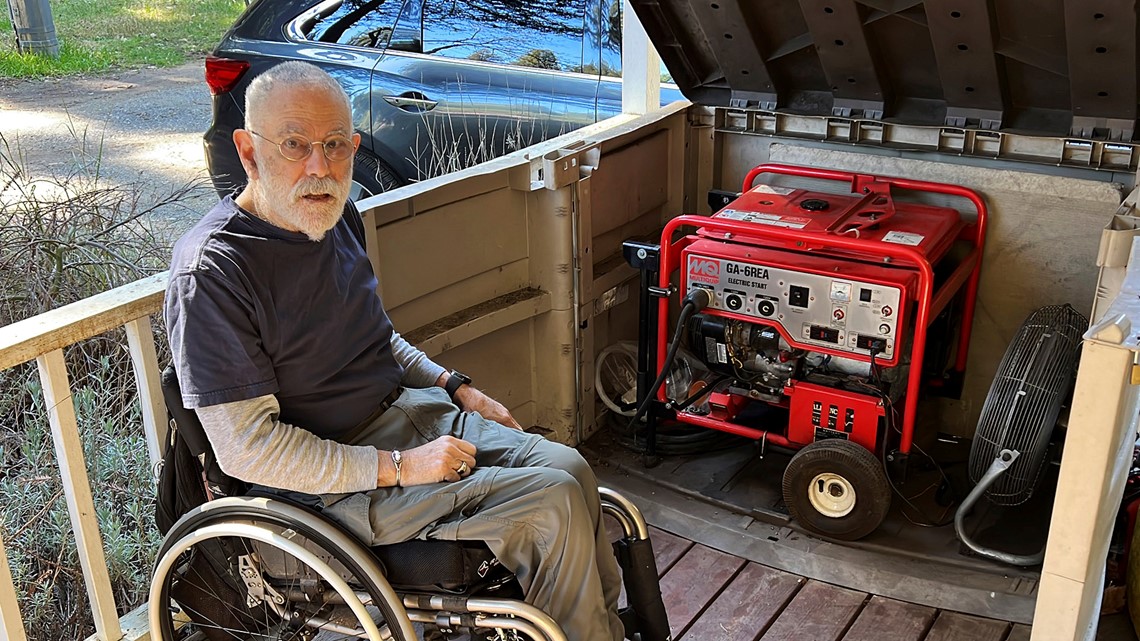
Richard Skaff, a paraplegic who is an advocate for the disabled in Northern California, said he has endured two forced outages each lasting five days over the past several years. He was fortunate to have a generator to keep his electric wheelchair powered and his house heated, but said many others with disabilities live on minimal incomes and struggle to get by during outages.
“If we’re going to allow PG&E and others to de-energize the grid, if we accept that as a concept, you have to look at the implications of that first,” Skaff said. “You have to determine the effects on the most vulnerable people."
PG&E and other utilities have sought to lessen the impacts by notifying people with needs in advance of shutoffs and setting up response centers where they can charge their phones or other essential devices.
Utilities also have started creating “microgrids” — local electrical networks that can disconnect from the main grid and operate independently to reduce the scope of shutoffs.
“We're very sensitive to the needs of our customers," said Southern California Edison Vice President Erik Takayesu. “We run risk calculations to ensure we’re making the right decisions. But it's really hard ... Each individual customer will have their own individual experience. The best we can do is help the customer prepare.”
The state utilities commission and some local officials have said the industry's efforts are insufficient for outages that can cover large portions of the state and affect numerous towns and cities.
By the end of this year, PG&E and Southern California Edison expect to have spent almost $20 billion since 2020 on wildfire prevention. The companies are cutting back vegetation near their equipment and putting up stronger power lines. PG&E plans to bury 10,000 miles (16,000 kilometers) of lines over 10 years so they won't be exposed to falling trees.
PG&E's customers paid on average almost $140 more last year versus the previous year to avert wildfires from their operations.

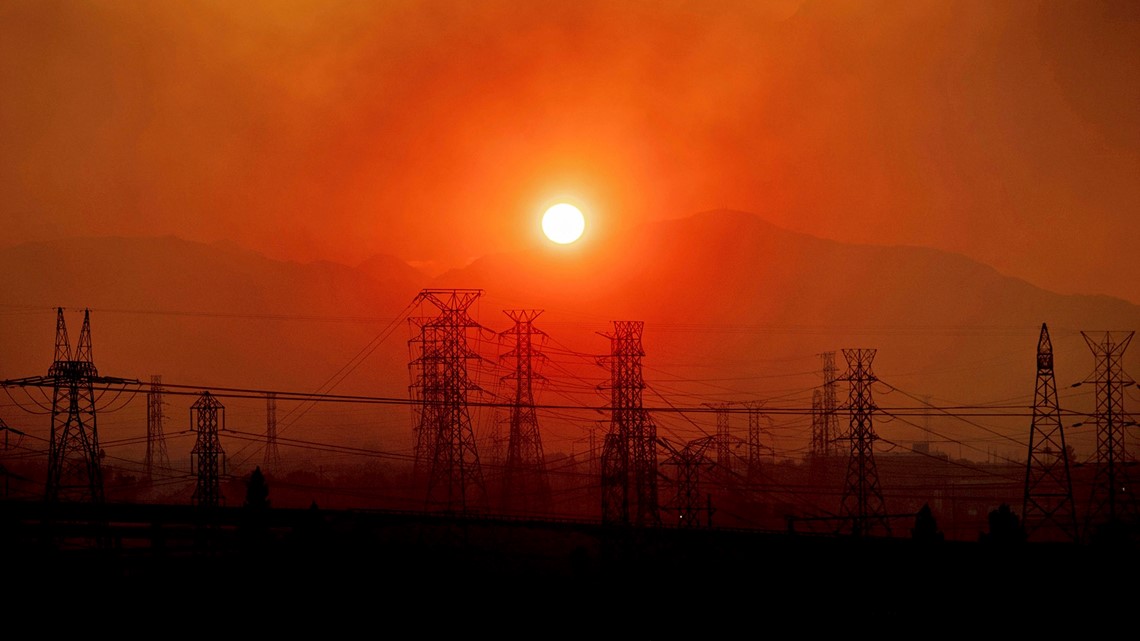
Rising electric bills because of extreme weather have outsized impact on low income households and communities of color, said John Howat, a senior energy analyst at National Consumer Law Center. These communities devote a higher proportion of their income to home energy bills, so they get hit harder than wealthier households.
Since it will take utilities many years to carry out their wildfire prevention efforts, companies will continue to use forced shutoffs to protect against wildfires.
The intentional outages help utilities avoid liability for deadly wildfires, but they amount to recurring crises for power customers who are disabled, elderly or with special needs, said Aaron Carruthers, executive director of the California State Council on Developmental Disabilities.
Unless more is done to prepare needy communities, shutoffs will continue to put lives at risk, threaten people's health and leave vulnerable people scared, Carruthers said.
Gabriela Madrigal, a 34-year-old Santa Barbara resident who needs a powered wheelchair to get around, said she's endured perhaps a dozen preventive shutoffs by Southern California Edison over the past several years.
Madrigal — who has a debilitating, neurological condition called spina bifida — lives in low-income city housing with her mother, who is her primary caregiver.
Each time the power blinks out, it catches them off guard, Madrigal said. When the outages last hours or days, her wheelchair goes dead. The chair weighs several hundred pounds with Madrigal in it, and her mother has trouble moving it.
So when the power goes off and no one else is around to help, “we're pretty much stuck,” Madrigal said. “It takes a toll on someone.”
___
Associated Press data journalist Caroline Ghisolfi contributed to this article.
___
Matthew Brown reported from Billings, Montana, Patrick Whittle from Bethel, Maine, Janet McConnaughey from New Orleans and Jasen Lo from Chicago.
AP data journalist Camille Fassett in Oakland, California is a corps member for The Associated Press/Report for America Statehouse News Initiative. Report for America is a nonprofit national service program that places journalists in local newsrooms to report on under-covered topics.

